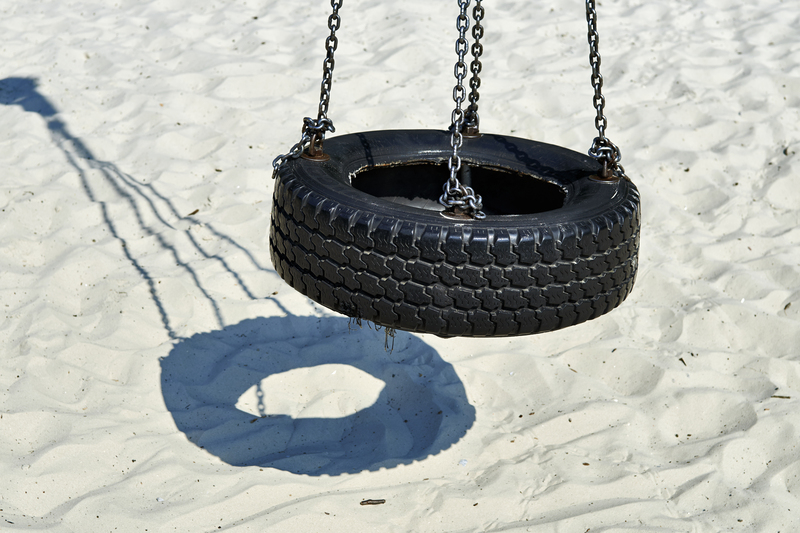How to Save Cash When Updating and Removing Large Waste
Home renovation, office clean-outs, or big landscaping projects all have one thing in common: the daunting task of large waste removal. Whether you're upgrading your kitchen, tearing down a shed, or decluttering a commercial space, disposing of bulky items can be surprisingly expensive and logistically challenging. In this comprehensive guide, we'll teach you how to save cash when updating and removing large waste. By following these practical strategies, you'll not only keep your project on budget but also lessen the stress that often comes with the process.
Understanding the High Cost of Large Waste Removal
Before diving into cost-saving tips, it's important to recognize why large waste removal can be expensive:
- Special disposal requirements for certain materials, such as appliances or electronics.
- High landfill fees for oversized items or large loads.
- Transportation costs, especially if using professional removal services or renting dumpsters.
- Time and labor involved in sorting, loading, and transporting waste.
By identifying what factors drive up costs, you can make informed decisions and plan ahead to minimize your expenses.

Planning Ahead: The First Step to Saving Money
A key factor in affordable large waste disposal is planning. Rushing into a project often leads to unnecessary spending, as you may end up paying premium prices for quick removals or overlook free or low-cost options.
- Audit Your Waste: Take inventory of the types and volumes of materials you'll need to dispose of. Separate hazardous items, recyclables, reusables, and general waste.
- Research Local Regulations: Avoid fines or extra fees by knowing what your municipality allows. Some areas restrict certain items in landfill or offer free pickup for specific goods.
- Set Your Budget: Determine how much you can reasonably spend. Use this as a guide for choosing between self-hauling, dumpster rental, or professional services.
Top Cash-Saving Methods for Large Waste Removal
1. Reuse and Repurpose Whenever Possible
Before sending anything to the dump, ask yourself whether any items can be reused. Reusing and repurposing not only reduces waste but also saves substantial money and resources. Here's how:
- Furniture: Sand, repaint, or reupholster old pieces instead of throwing them away. Consider donating usable items to a local charity.
- Construction Materials: Reclaimed wood, bricks, and fixtures can add character to your project or be sold.
- Appliances: If the appliances still work, sell them on classified websites or donate to a re-use center. Some centers pick up large items for free.
Tip: Search upcycling ideas online for inspiration on how to give new life to what you have!
2. Sell or Give Away What You Can
Many items headed for disposal may be valuable to others. Selling or giving away furniture, appliances, tools, or even excess materials helps you save on waste removal costs and might even make you some extra cash.
- Online Classifieds: Use platforms like Gumtree, Craigslist, or Facebook Marketplace for quick local transactions.
- Garage Sales: Combine your project clean-out with a garage sale or moving sale event.
- Freecycle Networks: These platforms connect people giving away items for free with those who need them, often with pickups organized by the recipient.
*Remember: Items in good condition are frequently snapped up fast, especially if you offer them at a low price or for free.*
3. Maximize Your Use of Municipal Bulk Pickup
Many towns provide free or low-cost bulk waste pickup for residents, often on a scheduled basis. Coordinating your update or cleanout around these dates can lead to significant savings.
- Consult Your Local Waste Department: Find out what items are eligible and when pickups are available.
- Prepare Accordingly: Some items require disassembly or tagging. Group acceptable items to ensure everything gets picked up in one go.
- Book Ahead: These services often fill up quickly, so don't wait until the last minute to schedule.
4. Share a Dumpster or Container Service
Renting a dumpster is convenient, but it can be costly for individuals or small projects. Consider sharing a dumpster with neighbors, friends, or relatives who have simultaneous disposal needs or renovation projects.
- Coordinate with others for a single drop-off and pickup location to split costs.
- Opt for the right size container. Bigger isn't always better; overflowing a small dumpster can incur extra fees, but unused space in a large one is a waste of money.
- Clarify rules with the rental company about mixed materials and weight limits to avoid surprises.
By splitting the bill, everyone saves cash without sacrificing convenience.
5. Transport Waste Yourself
If you have access to a truck or trailer, hauling your own waste to the landfill, recycling center, or donation site is often the most affordable large waste disposal method. Here's how to make it even cheaper:
- Re-use cardboard boxes, old blankets, or moving straps to protect your vehicle and organize loads.
- Sort materials ahead of time. Recycling centers or scrap yards often accept metals, electronics, and appliances for free or for payment, while landfills charge per weight or item.
- Group trips: Combine your haul with friends or neighbors' items, so you all split transportation and disposal costs.
*Pro tip: Always check landfill fees, hours of operation, and any restrictions before hitting the road to avoid wasted trips or unexpected charges.*
6. Use Junk Removal Services Wisely
Professional junk removal services are incredibly convenient but often come at a premium. If speed and labor assistance are necessary, keep these money-saving tactics in mind:
- Shop Around: Get quotes from several companies and negotiate, especially if you have a lot to remove.
- Consolidate Items: Removal companies typically charge by volume or truckload. Do a thorough cleanout so you aren't paying for half-empty trips.
- Take Advantage of Specials: Many companies offer discounts for "curbside ready" loads or slow periods of the year.
- Dismantle Bulky Items Yourself: Lighter, smaller pieces are often cheaper to remove, so break down furniture and appliances if possible.
7. Minimize Fees by Sorting Waste Properly
One of the less obvious ways to save money when removing large waste is to follow sorting guidelines:
- Most landfills and haulers penalize for incorrectly mixed loads, especially hazardous or electronic waste.
- Keep green waste, construction debris, and household items separate to access lower disposal rates.
- Remove prohibited items--such as paints, batteries, or chemicals--and dispose of them at designated collection points.
Simple sorting can turn a pricey mixed load into several cheaper (or even free) specialized trips.
8. Take Advantage of Free Recycling and Drop-Off Events
Many towns organize free recycling or hazardous waste drop-off events during the year:
- Look for events that accept electronics, tires, yard waste, paint, and appliances. Timing your project around these times can save a lot!
- Local retailers, especially for electronics or appliances, sometimes run take-back initiatives with little or no cost to the consumer.
- Ask your local government or utility company about scheduled "big item" days.
*Set reminders for these events in advance--spaces or slots may be limited and fill quickly!*
Additional Tips to Cut Down Costs While Removing Large Waste
Break Down or Dismantle Waste Yourself
The smaller and more manageable your items, the less space they take--and the less expensive they are to dispose of. Dismantle furniture, take doors off appliances, and flatten cardboard or boxes. This step is particularly crucial if you are renting a dumpster or paying by volume.
Use Community Resources and Networks
In many cases, neighbors, friends, or local online groups (such as neighborhood social networks) are more than willing to lend a hand--or even borrow your items before you toss them. Not only can this lower large waste removal costs, but it also strengthens community ties.
Bulk Buy Supplies and Team Up for Discounts
Need to purchase trash bags, tarps, or packing materials? Buy in bulk and share the cost with friends or neighbors completing similar projects.
Common Mistakes That Can Increase Waste Removal Costs
- Ignoring local guidelines for sorting and disposing of large items, resulting in rejected loads or fines.
- Overestimating your container size needs and overpaying for unnecessary dumpster space.
- Procrastinating and rushing the removal--last-minute bookings or emergency pickups often carry hefty surcharges.
- Paying for professional services without exploring free or more affordable options first.
- Throwing away reusable, recyclable, or sellable items in your waste pile.
Avoiding these pitfalls keeps your project running smoothly and your wallet intact.

The Environmental Angle: How Saving Money Helps the Planet
It's worth mentioning that every step you take to save cash when updating and removing large waste is likely having a positive impact on the environment, too. Reselling, reusing, and recycling reduce the load on landfills and conserve resources. Sorting waste ensures hazardous materials don't contaminate soil or water. And donating useable items diverts tons of waste every year while helping others.
By being proactive and mindful, you'll support a greener, cleaner community as well as your own budget.
Conclusion: Cutting Costs and Stress in Large Waste Disposal
Updating a home or business is rewarding, but the resulting large waste removal shouldn't drain your finances. With a combination of planning, involvement, and resourcefulness, you can save significant cash, benefit your community, and tread lightly on the environment. Prioritize reusing, recycling, sharing, and scheduling smartly for the best results. Remember, the cheapest and easiest waste is the waste you never generate--so consider every alternative before you pay to throw something away!
Ready to save cash on your next big cleanout or renovation? Apply these methods and watch the costs--and your piles of waste--disappear.
